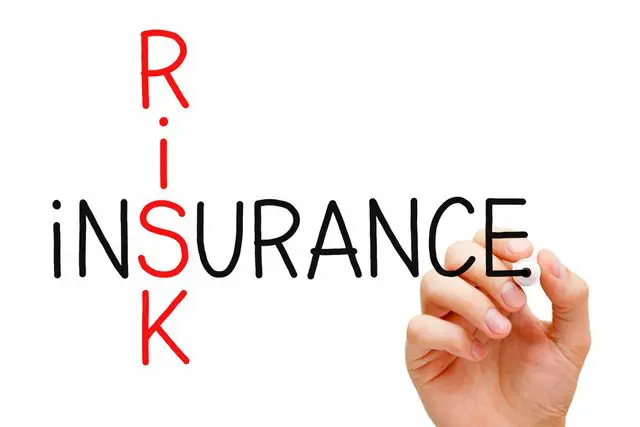In the dark ages (300 years ago), risk management’s primary tool was insurance – buy enough of it until you feel good enough to sleep well at night. Good tool to use before the 1950’s and the expansion of risk management.
Today the insurance industry has done a tremendous job in providing more insurance products (crime, environmental impairment liability, directors and officers, errors and omissions, and cyber) to address the risks that the organization faces thereby allowing the organization to avoid less operations and continue to maximize opportunities.
When do you avoid operations? Has insurance provided for all of your operational solutions when managing risk – no! Sometimes you need to avoid risks – but only after you have examined 6 other non-risk financing (insurance) solutions; reduction, prevention, segregation, duplication, diversification, and non-insurance transfer (plus a seventh – adaptation). Then you can insure the heck out of the risk or you can avoid the risk in its entirety. Remember, no risk – no reward.
What, Why and When to avoid risk? Manage and insure the risks that you fully understand and have control over and avoid those high hazard risks that take lots of resources that are not part of your core operations. For example, you manufacture a widget and decide to buy a truck and deliver the widgets to your wholesalers. People love the widgets – you manufacture more (build more manufacturing capacity) and you buy more trucks and train drivers. Your truck drivers are late, call in sick, form a union and are getting into accidents and shipments are not arriving on time or at all – sales are flat or reduced. You have lots of money invested in manufacturing equipment and trucks. The vertical integration looks like it is efficient and effective – ok, maybe not so effective. Probably not as efficient either if you were to factor in all your time and effort to buy the trucks, maintain them, hire good drivers, check their qualifications, train them, discipline them, rehabilitate their driving and eventually fire the bad ones after they have two accidents. It might not be efficient. Do the math – and consider avoidance if the conclusion is that it is neither; effective, efficient or part of your core operations.
Who and How to avoid the risk? Now that the conclusion is to avoid the risk you need to do it in such a way as you can get the benefit from avoiding the risk while taking advantage of your opportunity to sell products to a wholesaler. One possible solution, not the only solution, hire a third-party transportation firm to deliver your products. Make sure they are responsible for effective delivery and are responsible (contractually) for any loss of product, time delay, damage to the wholesaler warehouse, injury to their drivers, and damage to their vehicles and other vehicles on the road. When you are finished transferring the risk to the trucking company – make sure they have adequate insurance to pay for your damages and please have them prove it every year with a copy of their Certificate of Insurance.
In summary, there is an appropriate time to avoid the risk but please use this option sparingly since if you avoid all risks – you avoid all opportunity.
Disclaimer: Although the above article references events that have occurred in the past or are new to you, there are current policies/practices that can be learned and applied in todays market. Should you wish to explore any element of this article further, please contact Darius Delon, President of Risk Management 101 at 403-999-2724 for a free initial consultation.

Empowering Business Success
Discover expert insights and strategies to drive your business forward in the dynamic marketplace. Explore our blog for actionable tips and industry trends.
-

Reciprocal Insurance – General Information and Definitions
Introduction Insurance is a way to protect the assets you own from potential financial losses. Usually, this takes the form of…
-

8 Non-Financing Risk Control Methods, Segregation #4
Segregation is defined as “…the action or state of setting someone or something apart from other people or things…”. Thanks Google.…
-

8 Non-Financing Risk Control Methods, #3 Reduction
We know to sparingly avoid risk and how to improve our prevention (frequency) effectiveness but what is reduction (severity) all about…
-

8 Non-Financing Risk Control Methods – Prevention
We know to not use the risk avoidance technique unless we absolutely have to. What does preventing a risk really mean…
-

8 Non-Financing Risk Control Methods – #1 Avoidance
In the dark ages (300 years ago), risk management’s primary tool was insurance – buy enough of it until you feel…
-

Insurance Broker 20% Commission
May 12th, 2020 The insurance hard market has hit commercial insurance policy holders very hard over the last year. Condominium policies…
-

Organization Objectives – During COVID-19
All organizations, world-wide, have been hit with significant disruptions to their business due to the lockdown associated with COVID-19. Some business…
-

Business Continuity in the Age of Pandemic Covid-19
The Emergency Operations Centre has been activated, the Business Continuity Plans have been dusted off and the Crisis Communications Plan has…
-

Providing Risk Management Comment for Media
Resilience Should be the Goal of all Organizations https://www.canadianunderwriter.ca/catastrophes/resilience-should-be-a-goal-of-all-organizations-1004099922/

Leave a Reply